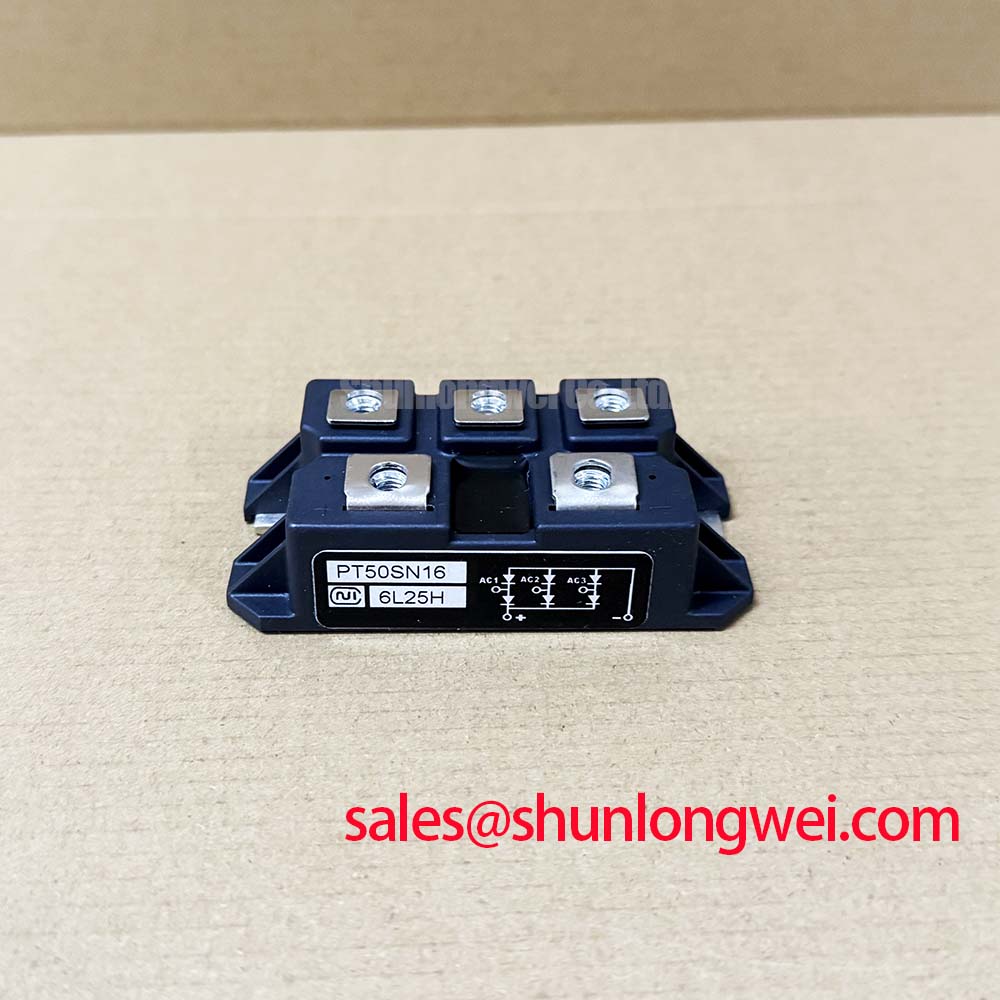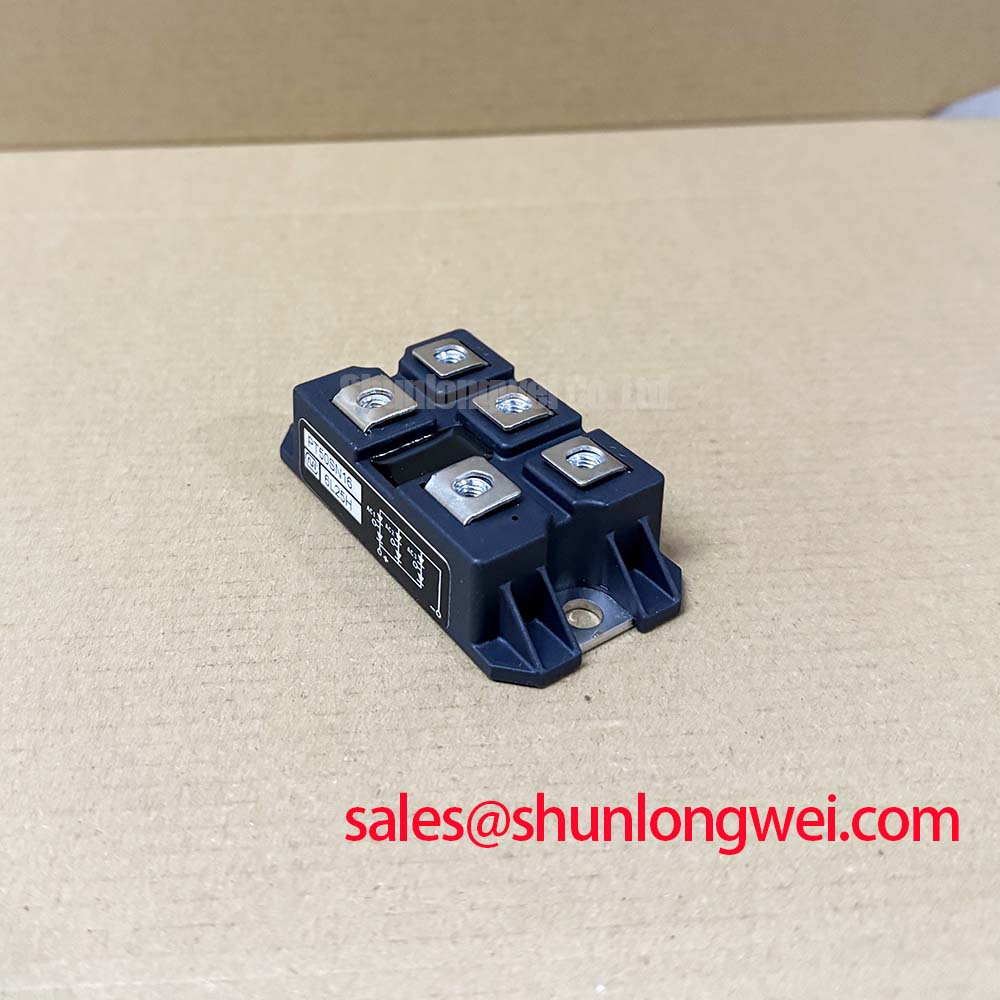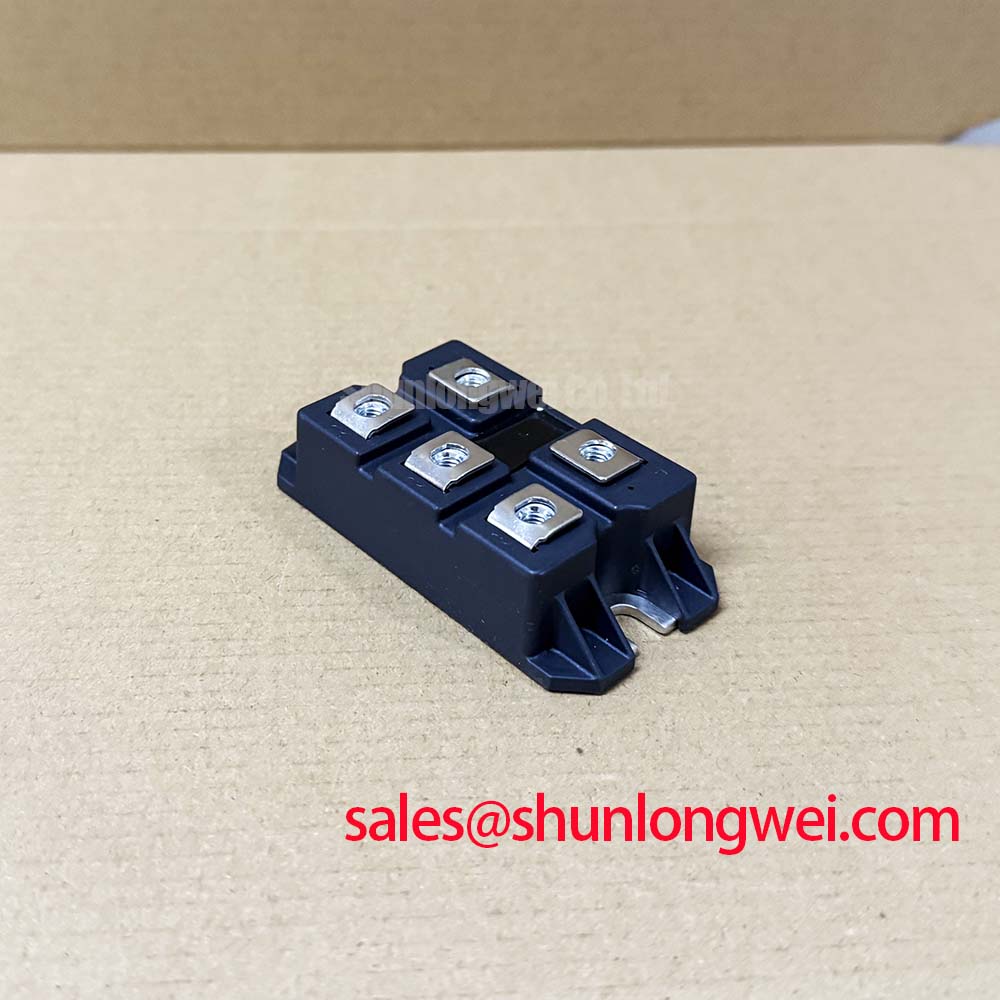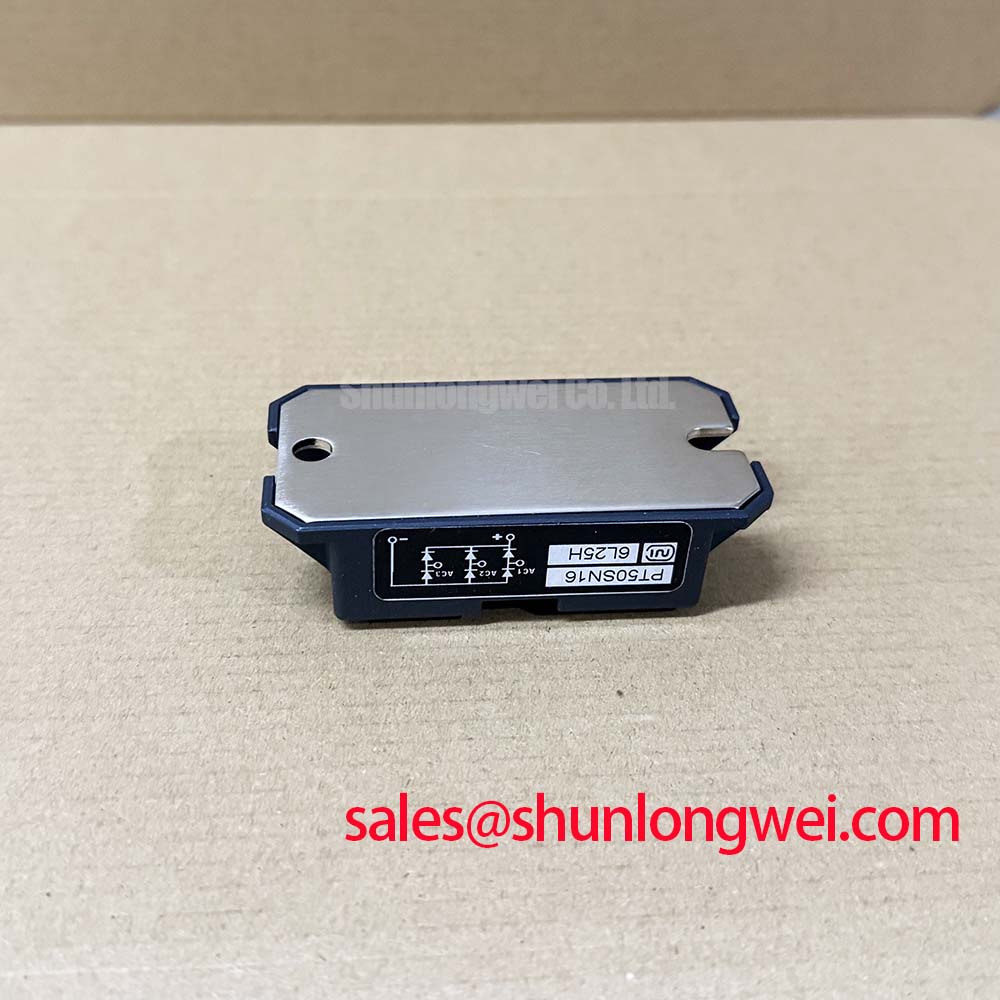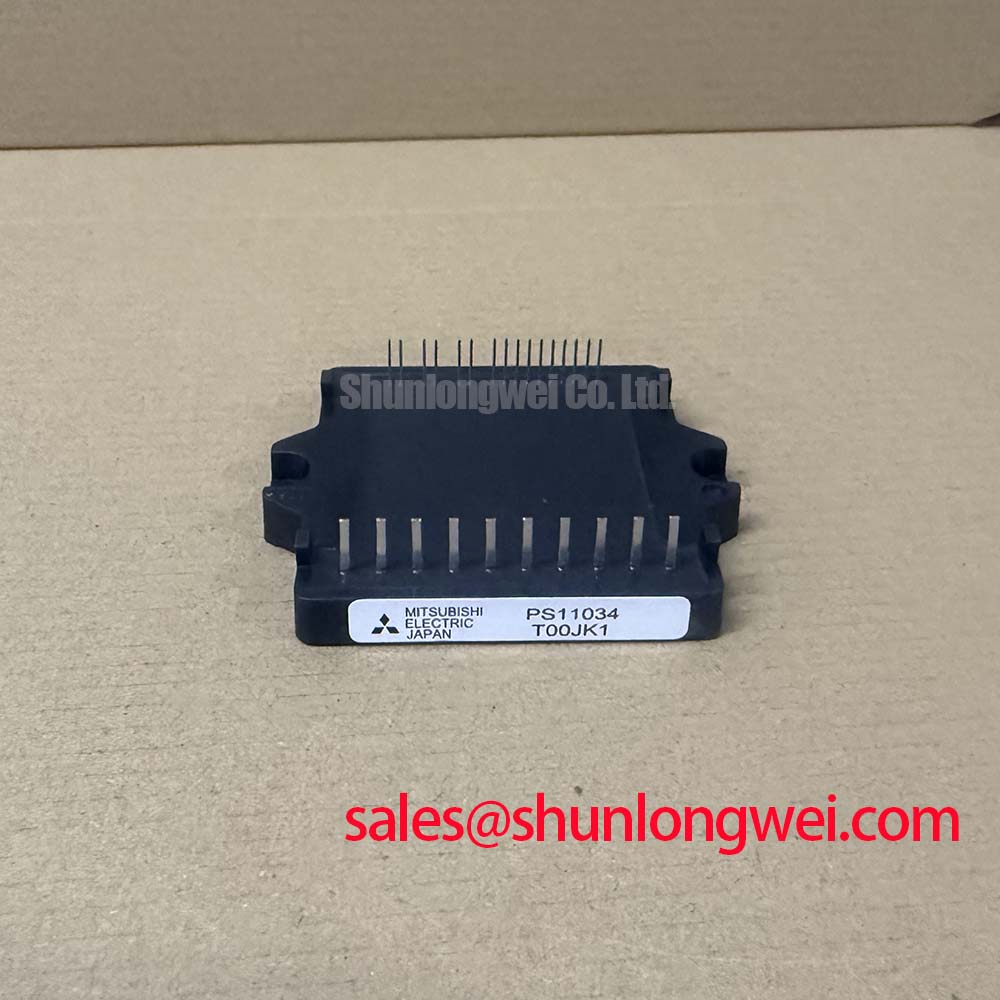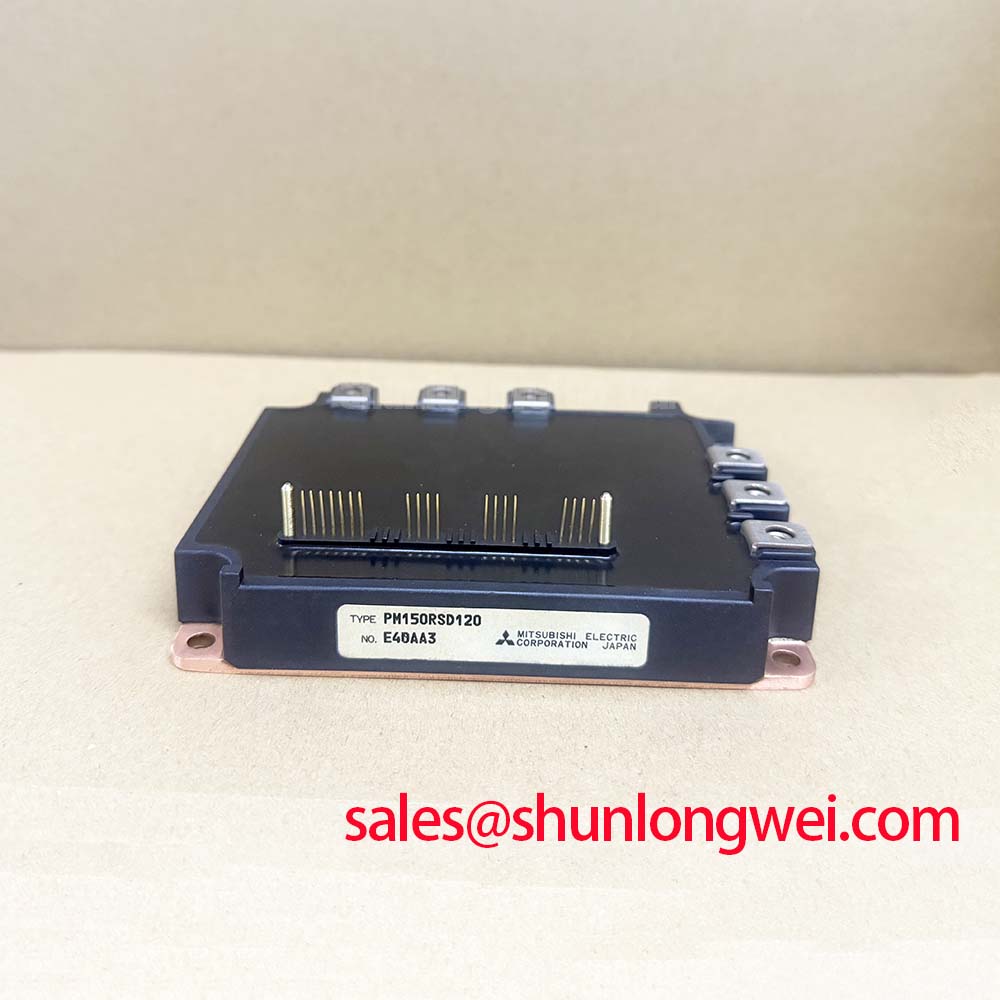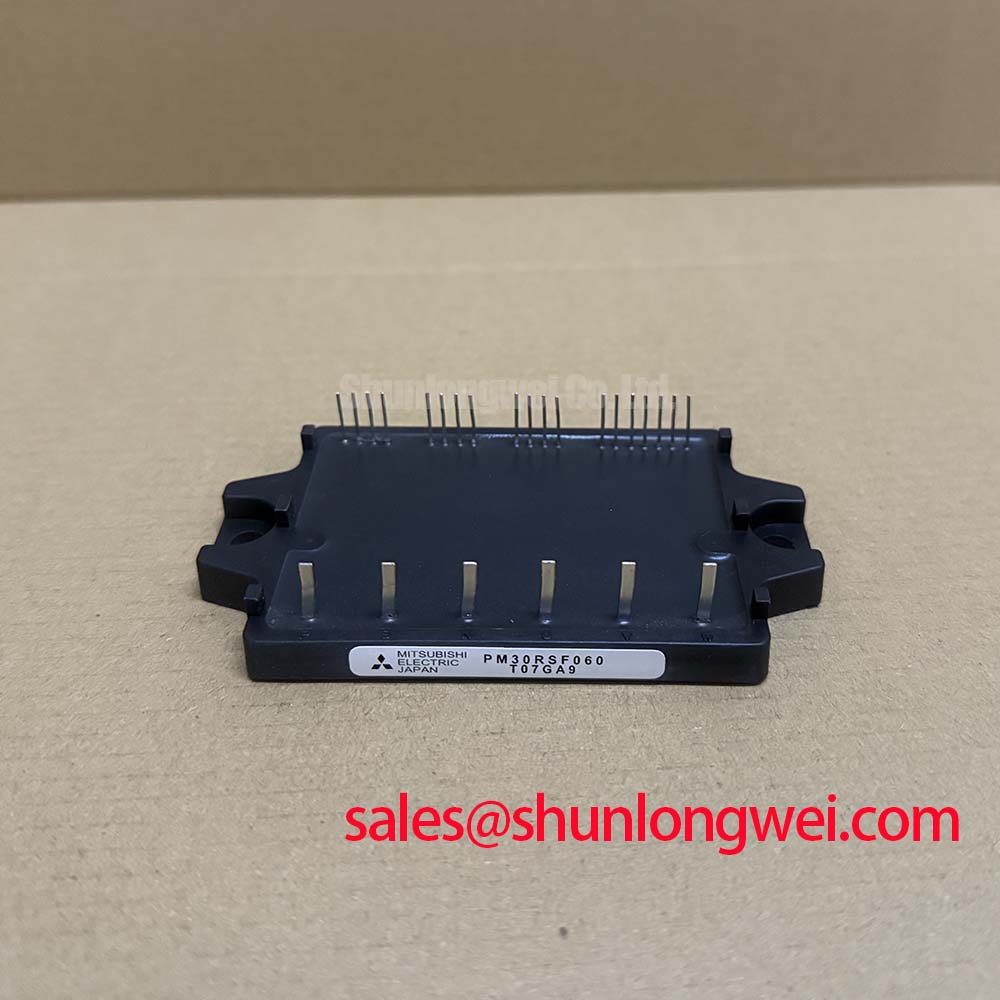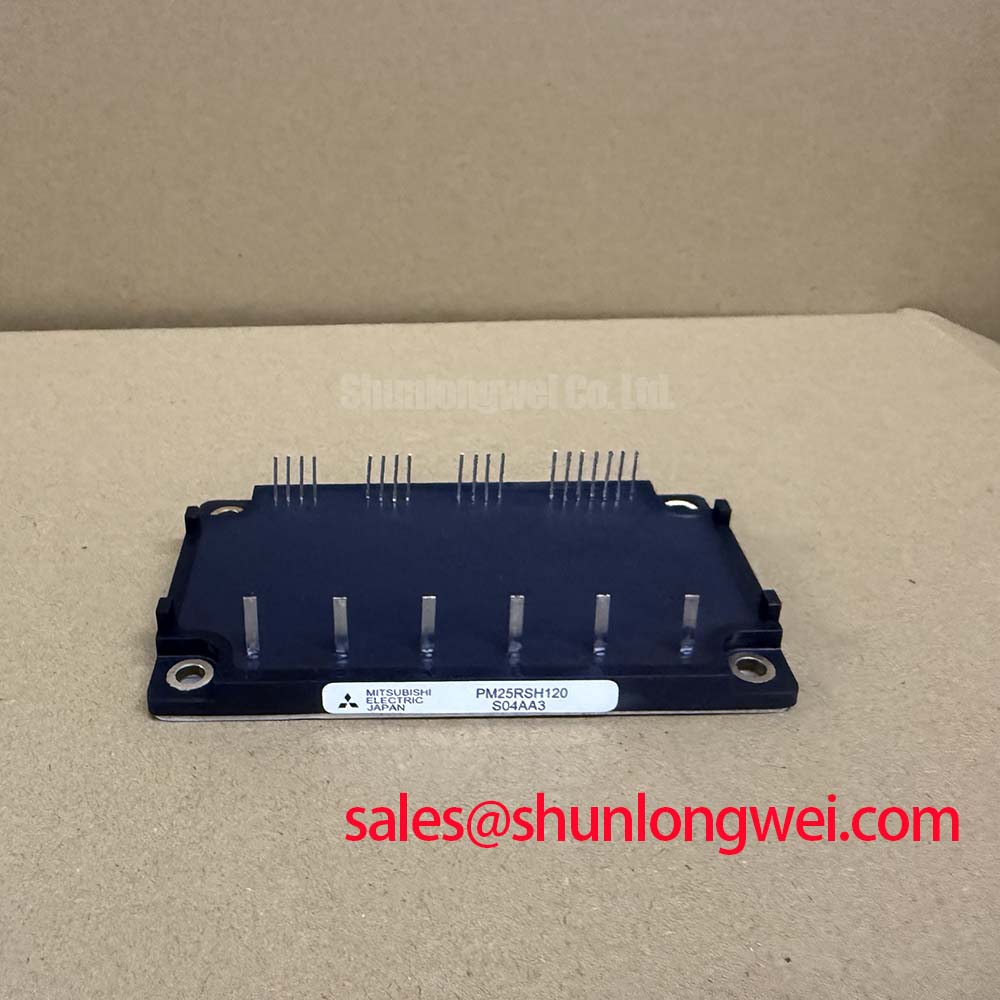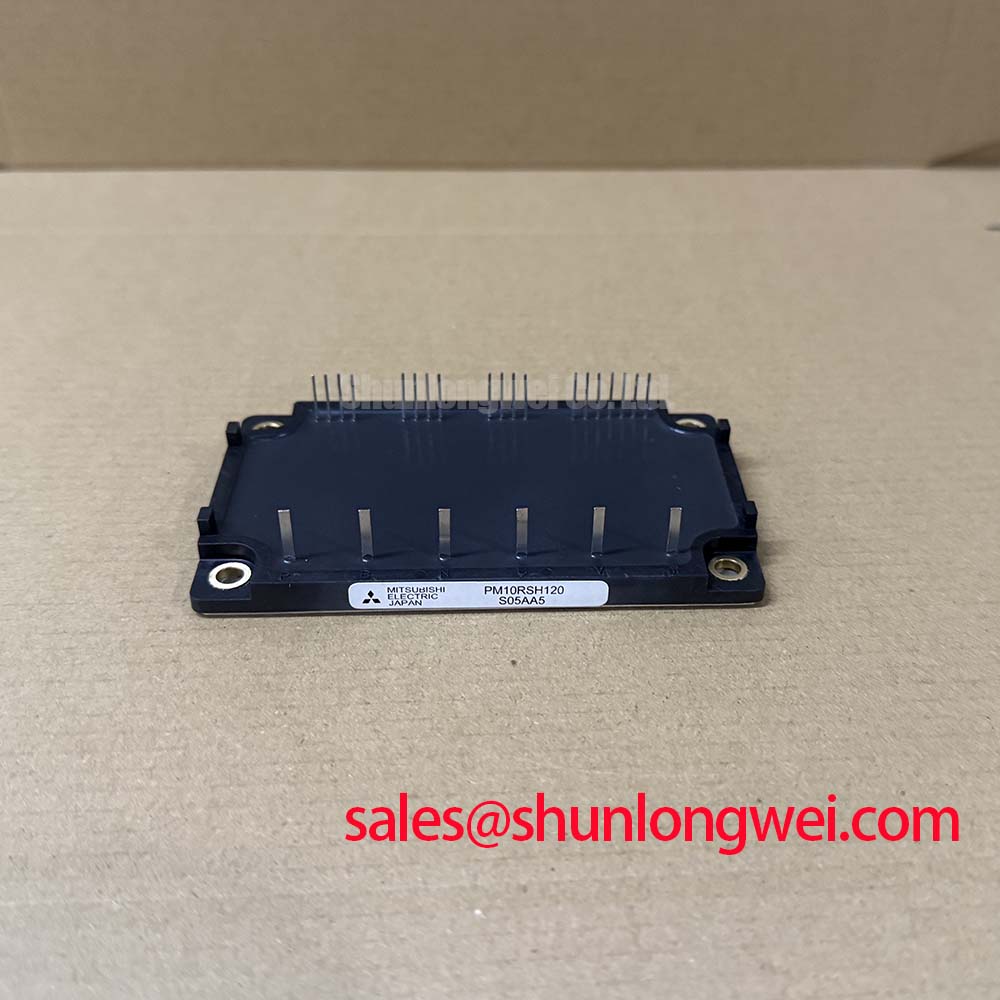Kyocera PT50SN16 Thyristor Module: 1600V Rectifier Bridge
Engineered for Enduring Power Conversion Stability
The Kyocera PT50SN16 Thyristor Module delivers exceptional long-term reliability for high-voltage industrial rectifiers through its superior thermal design and glass-passivated chip technology. This module provides a robust front-end power solution with core specifications of 1600V | 50A | Rth(j-c) 0.53°C/W. Its primary engineering benefits include enhanced thermal stability and sustained operational integrity under demanding industrial conditions. The use of glass passivation directly addresses concerns about long-term performance by creating a hermetic seal on the thyristor junctions, significantly slowing degradation mechanisms and ensuring predictable behavior throughout the component's operational life.
PT50SN16 Key Performance Metrics at a Glance
The following specifications are central to the PT50SN16's performance in industrial rectification applications. These values, derived from the official datasheet, provide the data needed for system design and thermal evaluation.
| Parameter | Value | Conditions |
|---|---|---|
| Repetitive Peak Reverse Voltage (VRRM) | 1600 V | - |
| Average On-State Current (IT(AV)) | 50 A | Tc = 105°C |
| Thermal Resistance (Rth(j-c)) | 0.53 °C/W | Per element, junction to case |
| Isolation Voltage (Viso) | 2500 V | A.C. 1 minute |
| Operating Junction Temperature (Tj) | -40 to +125 °C | - |
| Mounting Torque | 1.96 N·m (Typ) | M4 Screw |
Download the Datasheet for complete specifications and characteristic curves.
Deployment Example: Fortifying a 480V VFD Front-End
In a typical manufacturing facility, a Variable Frequency Drive (VFD) operating on a 480V three-phase line is subject to frequent voltage sags and swells. A system integrator selected the PT50SN16 as the main input rectifier. The module's 1600V VRRM provides a substantial safety margin against transient overvoltages common in industrial grids, preventing catastrophic failure. During peak production loads, the module's efficient thermal transfer, evidenced by its 0.53 °C/W thermal resistance, ensures the junction temperature remains well within safe operating limits, contributing to the VFD's uninterrupted operation and overall plant productivity.
Strategic Value in High-Stakes Industrial Environments
In sectors like automated manufacturing, water treatment, and commercial HVAC, system downtime translates directly to significant financial loss and operational disruption. The PT50SN16 thyristor module is engineered to address this reality. Its construction prioritizes long-term stability, shifting the focus from mere initial performance to sustained reliability over a multi-year service life. By building systems with components that possess high thermal and electrical endurance, design engineers can lower the total cost of ownership (TCO) through reduced maintenance cycles and a lower probability of unexpected field failures, aligning with the core principles of resilient and future-proof infrastructure. For a deeper understanding of thermal performance metrics, a resource on Why Rth Matters can provide additional context.
Engineering Deep-Dive: Thermal Path and Material Science
A component's reliability is fundamentally tied to its ability to manage heat. The Kyocera PT50SN16 incorporates specific design choices to optimize this process.
The Critical Role of Thermal Resistance
The specified thermal resistance, Rth(j-c), of 0.53 °C/W can be thought of as the "width of a pipe" for heat trying to escape the active silicon chip. A lower value signifies a wider pipe, allowing heat to flow away more easily from the junction to the module's baseplate. This efficiency is critical; for every watt of energy lost as heat, the junction temperature of the PT50SN16 will only rise by 0.53°C above the case temperature. This allows the device to handle its rated 50A current without exceeding its maximum junction temperature, a key factor in preventing premature aging and failure. For broader insights into component failure modes, consider reviewing best practices for IGBT failure analysis, as many principles apply.
Material Integrity for Long-Term Stability
- Glass Passivated Chips: The thyristor junctions are protected by a layer of glass. This passivation creates a stable and hermetic seal, shielding the sensitive semiconductor from contaminants and electrical field variations at the surface. This contributes to low leakage currents and predictable blocking voltage characteristics over tens of thousands of operational hours.
- Alumina Ceramic Isolation: An Alumina (Al2O3) ceramic substrate provides the high dielectric strength needed for the 2500V isolation rating. This allows the module to be mounted directly to a grounded chassis or heatsink, simplifying the mechanical design and improving the thermal interface compared to solutions requiring separate, often less efficient, insulating pads.
Core Applications: Where Reliability Meets Rectification
The robust electrical and thermal characteristics of the Kyocera PT50SN16 make it a suitable component for the non-controlled, front-end rectification stages of various power conversion systems. What is the primary benefit of its 1600V rating? It offers a substantial safety margin for 480V industrial lines. Its design is optimized for applications where durability and consistent performance are paramount.
- Industrial Motor Drives: Serves as the input rectifier for Variable Frequency Drives (VFDs) and DC motor controllers.
- Uninterruptible Power Supplies (UPS): Provides the initial AC-to-DC conversion in online UPS systems, ensuring a stable DC bus for the inverter stage.
- Welding Power Supplies: Forms the foundation of the power stage in industrial welding equipment.
- General Purpose DC Power Supplies: Used in high-power DC sources for industrial processes and laboratory equipment.
For non-switched front-end rectifiers on 480V AC lines where durability is prioritized, the PT50SN16's 1600V rating and 0.53 °C/W thermal resistance make it a structurally sound choice.
Data-Backed Context for Your Evaluation
As a distributor, our goal is to provide objective data to empower your design decisions. The PT50SN16 is rated for 50A of average on-state current. For systems with higher power demands, it is useful to see how its specifications compare to other devices in a similar voltage class. For instance, for applications requiring higher current handling, the related PT150S16 provides a 150A capability while maintaining the same 1600V blocking voltage. This information is presented not as a recommendation, but as factual data to assist engineers in selecting a component that aligns precisely with their system's power budget and thermal management strategy.
A Foundation for Resilient Power Systems
The strategic selection of foundational components like the PT50SN16 is instrumental in building power systems that are not only efficient but also resilient. By integrating devices engineered with significant thermal and electrical margins, designers lay the groundwork for equipment that withstands the unpredictable nature of industrial environments. This foresight in component selection is a key enabler for creating systems that deliver sustained value and operational confidence long into the future, minimizing unscheduled downtime and supporting the backbone of modern industry.
Frequently Asked Questions about the PT50SN16
1. Why is the PT50SN16's VRRM rated for 1600V when many industrial lines are 400V or 480V?
The 1600V rating provides a crucial safety margin. Industrial power lines are prone to transient overvoltages from events like lightning strikes, load switching, and motor feedback. A 1600V device offers significantly more robustness against these transients than a 1200V-rated part, reducing the likelihood of failure and enhancing the overall reliability of the end equipment, particularly in uncontrolled electrical environments.
2. How does the PT50SN16's construction help mitigate failures from thermal cycling?
The module's design, which includes matched coefficients of thermal expansion (CTE) between its internal layers where possible and a robust ceramic isolation base, helps reduce mechanical stress during temperature changes. This inherent durability, combined with the efficient heat dissipation (low Rth(j-c)), minimizes the peak temperatures the junctions experience, thereby lessening the severity of thermal cycles and extending the module's operational lifespan.
3. Is the glass passivation on the PT50SN16's thyristor chips significant for long-term use?
Yes, it is highly significant. Glass passivation creates a hermetic, chemically inert seal around the semiconductor junction. This protects it from ambient humidity and mobile ionic contamination that can degrade blocking voltage capability and increase leakage current over time. For industrial equipment expected to operate reliably for 10+ years, this feature is a key contributor to long-term performance stability.
4. What is the recommended mounting torque for installing the PT50SN16?
The datasheet specifies a typical mounting torque of 1.96 N·m for the M4 mounting screws. Applying the correct torque is critical for ensuring a low-resistance thermal path to the heatsink without inducing excessive mechanical stress on the module's baseplate.

